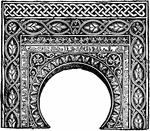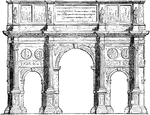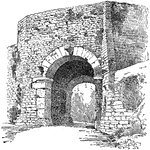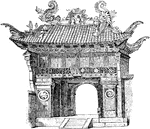Clipart tagged: ‘Archway’

Arabesque Archway
"Arabesque is a style of ornamentation in which are represented men, animals (the latter consisting…

Arch of Constantine
"Triumphal arches from a class apart among the monuments of Roman architecture. It was an early custom…

The Cloaca Maxima at Rome
In these Etruscan buildings traces are to be found of the arch; as, for instance, in the Gate of Volterra…

An Ertuscan Arch
"The Italian city of Volterra still preserves in the Porta dell' Arco an interesting relic of Ertuscan…

Shadows of an Archway
"An archway parallel to the picture. the sun's inclination 40° and elevation 30°." (Britannica,…

Entrance-Gate to the Temple of Confucius at Shanghai
Chinese structures have nothing durable about them, for perishable wood forms an essential element in…